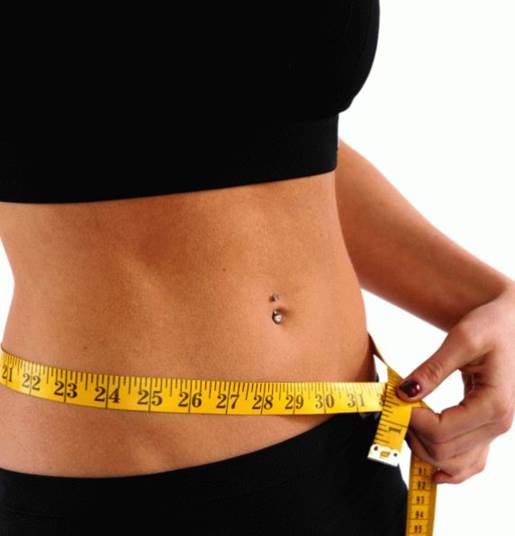It's the Sod's Law of weight loss:
fat comes off the places you don't want but not the places you do. Thankfully,
new science means that could all be about to change
If you've ever been on a diet then you will
know this story well. Woman restricts calories. She trains like an Olympic
athlete. She applies lotions promising `slimmer thighs and a tighter behind'
while submitting her body to massages and machines that profess to blast fat
and target tricky bumps and lumps. And yet. After all that effort. All that
pain. All that money. The one place she wanted to drop a few kilos (thighs/bum/
insert appropriate body part here) she can't.
We have all been told how fat works.
Essentially, if the number of calories in beats calories out, you put on
weight. But an increasing number of academics and those on the forefront of
weight loss research are beginning to agree that hormones may play a greater
part than was once thought when it comes to how and where we store fat. Well,
what does that mean for us and virtually every other woman on the planet who
has subscribed to the multi-billion pound diet industry at some point? It means
this: that at last, we may be able to wage a direct weight-loss assault on the
areas we want.

Essentially,
if the number of calories in beats calories out, you put on weight.
But let's rewind a bit first. A 2008 paper
in the British Journal of Nutrition suggested that women generally have a
larger proportion of body mass as fat, and are more likely to deposit fat
subcutaneously (that's a fancy way of saying under the skin) and on their lower
half, than men. So we have always accepted that men will have bellies while
women will always be saddled with, well, saddlebags and thighs. However, it
turns out that it may be possible to target excessive fat in particular areas
by making lifestyle choices that help to realign hormonal imbalances, says
nutritionist Max Tomlinson and author of Target Your Fat Spots, who insists
that "hormones exert a powerful influence on body fat distribution in
humans."
We've known for a long time that there's a
relationship between hormones and body shape. "Remember your teenage
years?" asks Richard Ross, endocrinology lecturer at Sheffield University.
"You can't really tell much difference between boys and girls, in terms of
body composition, before puberty. At puberty, boys' testosterone switches on
and they grow taller and get bigger muscles whereas girls' ovaries switch on,
releasing estrogen and they get breasts and buttocks." Not to mention
spots, PMS and inexplicable crushes on their geography teachers
The body's signature
Charles Poliquin is a Canadian strength
coach, who over the last few years has caused quite a storm with his Biosignature
Modulation Method. He believes you can take an individual's hormonal blueprint
(their "Biosignature") by taking fat measurements in 12 specific
sites on the body using calipers. The data is then used to investigate where
hormones are out of whack. Then, believes Poliquin, you can use nutrition,
supplements and strength training to realign hormonal imbalances and target
individual "fat spots".

you
can use nutrition, supplements and strength training to realign hormonal
imbalances and target individual "fat spots".
If it sounds radical, well, it is. And
Poliquin is not without his critics. While Olympic athletes and even Hollywood
stars are said to have adopted his revolutionary approach to training and
weight loss, (Superman Henry Cavill's arms were said to be targeted with
Poliquin's program and have you seen them lately?) there are others who are
understandably skeptical.
Skin scientist Peter Roberts, who has
previously worked as a national commercial business manager for GlaxoSmithKlein
and now runs SkinMed, has done extensive academic research into the concept of
Biosignature. Yet he remains unconvinced: "There's very little clinical
evidence, although there is lots of anecdotal evidence [to suggest Poliquin's
method works]. I don't really believe hormones determine whether you lose fat
from your bottom or anywhere else. In fact, I'd say if you ran some hormone
tests on these people you'd probably find the hormone balance is perfectly
normal.'
Poliquin begs to differ. High triceps fat
levels, he insists, indicate low testosterone levels. This matches findings
from researchers in California, who saw a loss in fat in the upper arm when
elevating testosterone to above normal levels in healthy young men.

In
fact, I'd say if you ran some hormone tests on these people you'd probably find
the hormone balance is perfectly normal.
And before you go thinking, "Well,
that's all about men, but what about me?", then hold on there.
"Testosterone is produced by both sexes," says Tomlinson. "That
means if you have excessive fat on your triceps you may have low levels of
testosterone.”
Richard Ross agrees: “Androgens [male
hormones like testosterone] do burn off body fat both intra-abdominal and
subcutaneous areas. If you have an increase in intra-abdominal fat (ie, a big
tummy) that could be indicative of cortisol excess, growth hormone deficiency
and in men it may be associated with testosterone deficiency.”
He also clarifies the link between the
thyroid hormone thyroxin and fat gain: “Essentially thyroxin is important for
your metabolic rate. So if you have a deficiency in thyroid hormones, you tend
to put on fat and find it difficult to lose. And if you have excessive thyroid
hormones you burn off fats and muscle.”
But Poliquin’s analysis takes it a step
further and suggests thyroid hormone imbalance is related to upper back fat.
Tomlinson, agrees. “Hypothyroidism (low thyroid function) can cause fat
deposits around the bra area as well as overall weight gain. No to mention
fatigue, depression, low body temperature, constipation, decreased memory and
poor concentration.” Fun times.

And
if you have excessive thyroid hormones you burn off fats and muscle.
Fat around the stomach area, he also
suggests, has a direct correlation with an increase in stress hormones. “Stomach
fat is a clear sign of an adrenal problem and, more specifically, of the
over-production of the stress hormone cortisol. Medium to long-term stress
elevates cortisol levels, which leads to raised blood sugars and the eventual
deposition of blood sugars on the abdomen as stubborn fat.” So you can blame
your boss for that pot belly.
Recent science backs this up: a study published in the Journal of Psychosomatic Medicine charted
the results when 59 healthy, premenopausal women were exposed to three laboratory
stress sessions and one rest session over the course of four days. The 29 of
those women who had a high waist to hip ratio (ie held more fat in that area)
regarded the challenges as more threatening, performed worse and lo and behold secreted
significantly more cortisol than the 30 (leaner) women with a low waist to hip
ratio. The study’s conclusion? Central fat distribution is related to greater
psychological vulnerability to stress and cortisol reactivity.